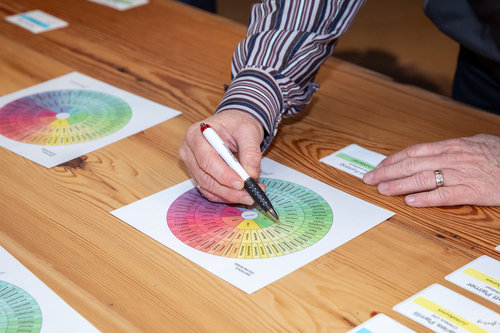When I began seeing a new therapist a few years ago, it coincided with our introduction of the Emotion Wheel. Much to my satisfaction, she would begin our sessions by asking how I was feeling. As you can imagine, I’d pull out the Wheel and share away.
The reason I did that was also behind the introduction of the Emotion Wheel in the first place: that I had difficulty identifying and labeling my feelings. The Wheel became a helpful tool in my arsenal that forced me to think deeply about what was going on in my mind and body, and find words that reflected those emotions.
Fast forward to last month, when I was preparing for the latest session of our emotional intelligence Master Class. I came across a word I’d never heard or seen before – alexithymia. According to the book, Consciousness and Cognition, alexithymia “refers to a person’s inability to identify or verbally describe his or her feelings.” Quite simply, it’s emotional blindness.
I was dumbfounded. In over ten years of studying and practicing emotional intelligence, I had never seen this word. But what was more unsettling was that I knew this about myself yet could never validate it. I shared it with my therapist to no avail, talked about it with friends and colleagues, and spent hours Googling phrases that described my “symptoms”; obviously, I didn’t search well.
Interestingly, alexithymia is simply a personality trait, not a disease or disorder (here’s a simple test). And even more interesting to me is that it can be mitigated by so many of the strategies we discuss in our emotional intelligence training: journaling, reading fiction, going to therapy, building empathy, and of course, using the Emotion Wheel.


